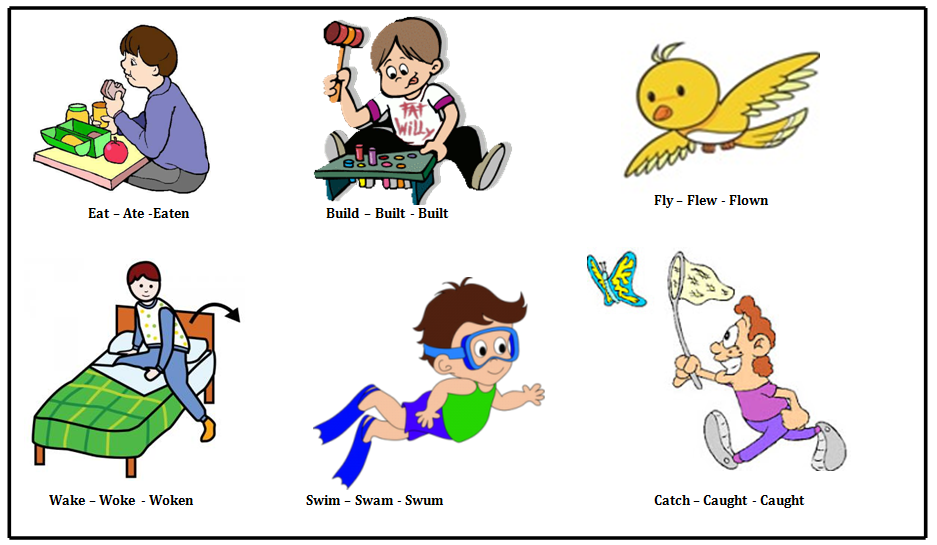What Is the Difference between Regular and Irregular Verbs?

Whether you are dealing with regular or irregular verbs in the English language, they both have specific simple past and past participle spellings. The difference lies in how the word is put into past tense. Simple past tense verbs always have just one part. Past participle tense verbs have multiple parts and usually require an auxiliary verb, such as had, has or have. With regular verbs, the past tense simply adds an “ed” to the end of the word, with both simple past and past particle taking the same form. However, irregular verbs are the oddballs, the mavericks in the world of verbs; they are the verbs that do not conform to the traditional rules. With these verbs, adding the “ed” is not only incorrect, but it often sounds awkward. The patterns for irregular verbs vary, and the simple past and past participle can end differently. Consider the following examples:
Regular verb: I learn easily. I learned that material yesterday. (For the verb “learn,” “learned” is both the simple past and past participle).
Irregular verb: I hurt my foot today. I hurt my foot yesterday. (For the verb “hurt,” “hurt” is both the simple past and past participle. You would not write “I hurted my foot yesterday”).
Different types of irregular verbs
There are no specific rules that dictate how the simple past and past particle verbs are formed. Some irregular verbs all take the same form, such as put (put, put, put). Others take different forms but have similar sounds, such as blow (blow, blew, blown). Yet another type has simple past and past particle forms that are identical yet differ from the present tense, such as sleep (sleep, slept, slept). Then there are those that do not fall into any of the previous three categories, such as go (go, went, gone). Consider the following examples:
Same form:
- I put learning about irregular verbs at the top of my to-do list today (present tense of put).
- Yesterday, I put irregular verbs at the top of my list of things to learn (simple past tense of put).
- I should have put irregular verbs on my list of things to learn much sooner (past participle tense of put).
Similar sounds:
- I drink only occasionally (present tense of drink).
- I drank socially last weekend (simple past tense of drink).
- I have drunk socially at most parties I attended in college (past participle of drink).
Same simple past and past participle forms:
- I make coffee as soon as I awake (present tense of make).
- I made coffee as soon as I awoke (simple past tense of make).
- I had made coffee as soon as I awoke (past participle tense of make).
Uncategorized:
- I need to go to the store (present tense of go).
- I went to the store earlier (simple past tense of go).
- I have gone to the store already today (part participle of go).
Learning irregular verbs
How do you learn irregular verbs? Simply put, you must either memorize a rather exhaustive list of them if they are not part of your everyday vocabulary, or you can learn them as you go. There are many resources available to study lists of irregular verbs. The 10 most commonly used verbs in the English language are actually irregular (be, can, do, get, go, have, say, see, take and will). Most often, if English is your native language, you simply know the correct forms of the verb for each tense of many commonly used words. In any case, when you learn or use a verb with which you are not familiar, you should look up the appropriate form for the tense. Over time, your knowledge of how to form the simple past and past participle for those oddball irregular verbs expands.
No hay comentarios:
Publicar un comentario